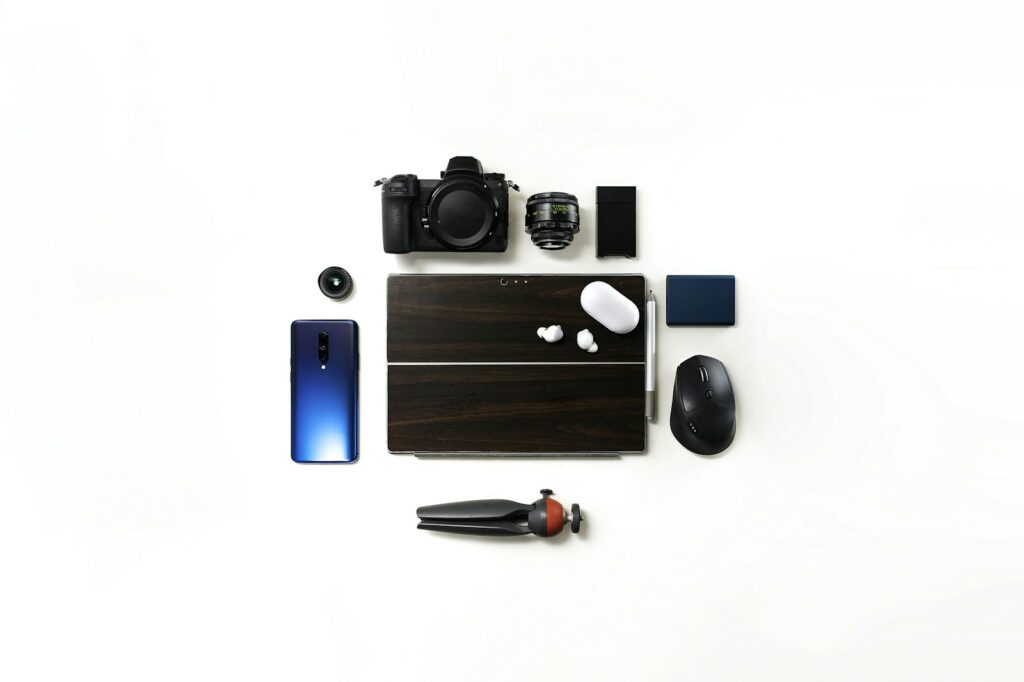Do you want your photographs to be more eye catching, but don't know where to begin? For starters, you can try a few of these simple composition tips to get you started on the path to compelling photographs. They are appropriate for all skill levels of photographers and can be adapted to just about any style of photography, too.
- Shoot What You Love – One of the easiest, least technical ways to create fascinating photos is to simply shoot what you love. Perhaps you love to go birding, or enjoy a good game of football, maybe you love people watch in bustling locations. Find what it is you love to do in your spare time and start photographing it. Since you love doing it, chances are you all ready look at it differently than others, which only means you are naturally inclined to photograph it in a different way.
- Pay Attention To The Background – Many times the background of photograph is more of an afterthought, if it was ever a thought at all. If you are not shooting in a studio which generally offers us the convenience of hand selecting our backdrops, make sure you are looking past your subject to see whats behind it. Avoid shooting a subject against a similarly colored background so the subject doesn't become “lost” by blending in too much. Try to avoid any distractions that will take away from the story you are trying to tell with your image. If you can't move to a new location, consider using a more shallow depth of field to help blur out the background and eliminate any eyes wandering to what are essentially unimportant details in the image.
- Symmetry – Try incorporating symmetry into your images to give the photo a natural balance that is easy for the eye to take in. Alternatively, creatively interrupting the symmetry is a great way to add intrest and create a clear focal point which the eye is automatically drawn to. When you are out shooting, look for interesting patterns and lines in both man made and natural elements. They are all over, think brick walls, perfectly placed windows on a building, rows of crops, telephone and electricity poles. Symmetry is all around us, we just have to be willing to look for it at times.
- Perspective – If you have an interesting subject all your images are coming out uninteresting, it won't hurt to switch up your perspective. Move around your subject and photograph it from multiple points of view. Sometimes a simple change such as taking a single step to the side can turn a snapshot into a portfolio worthy image. Don't be afraid to kneel down, stand on a chair, stretch you camera hand far to the side, just work the scene until your subject magically pops from the setting.
- Avoid The Middle – As a rule, placing your subject in the middle of a photograph isn't the most aesthetically pleasing composition. Instead, try adjusting your framing so that the subject is off to one side. The rule of thirds is a fundamental part of photography and is one of the more adamantly followed rules in art. Of course, that is not to say the rule of thirds should adhered to for every composition; however, if you have taken multiple shots of your subject and they all happen to have the subject dead center in the frame, try recomposing by sticking your subject to either the right or left 1/3 of the frame.
One last piece of advice: slow down. If you feel like photographs are just missing the target, despite correct exposure and other technicalities, by all means, don't rush yourself. Take your time to fully evaluate the setting and the subject. Do all of your “cropping” in camera, by moving in closer to your subject, if possible. Take every little element of the photograph, right down to the most minute detail, into consideration and consider it's impact as a whole on the photograph itself. You may find you need to remove something–be it a piece of trash or a crack in the sidewalk–and sometimes you will want to add something to it, such as a persons silhouette or a leading line in disguise as a paved road. Just remember, the most important thing to remember when trying to create compelling photographs is paying attention to detail!








6 Comments
I like this list for its simplicity. I would add 2, probably my top 2:
– simplify
– get closer
Great photos in this article! I see a naked bum in the old man swimming photos 🙂
Blaise
Bloody rule of thirds again. I’m about to choke.
Clear, concise, straightforward.
Nice job!
Many thanks.
I agree with all your advice, especially “paying attention to the “whole enchilada” (the background)…https://joebaraban.com/blog/personal-pearls-of-wisdom-the-whole-enchilada/.
However, as fr as the Rule of Thirds is concerned, in my opinion it’s meant for people to take average photos. I wrote a post on it you might be interested in reading…https://joebaraban.com/blog/personal-pearls-of-wisdom-the-rule-of-thirds-is-not-for-everyone/
Btw, beautiful images!
JoeB
Joe and Tom, you are right, the rule of thirds isn’t always the right answer, but it does serve as a good jumping off point or a new approach if you just get stuck on a composition. Hence the sentence “that is not to say the rule of thirds should be adhered to for every composition.”
Be sure to click through to the link in the section about the rule of thirds in this article. It’s all about breaking the rules! As Lightstalking user, Will, says in the comments of that one “Learn the rules, then break them!”
Thanks for contributing! Joe, great write-ups, thanks for linking us!
Great article. Very helpful tips for every commercial photographer and e-commerce retailers. Consumers want high quality photo and acquiring all those high quality photos is not just easy to provide. It takes cost If I want to hire professional photographer. That’s why some DIY and techniques come to help you without sacrificing the quality product photos.